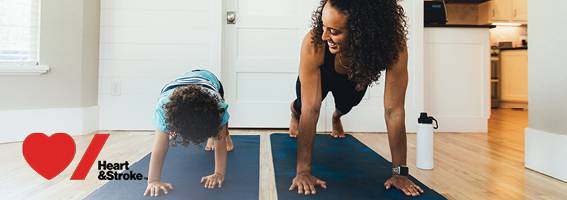Are you looking to improve your focus? Now that you’re back to something that resembles pre-pandemic life, have you noticed that your memory isn’t what it used to be? If you’ve been struggling with focus, memory or multitasking, the answer might be dynamic exercises.
Yes, physical exercise could be the answer to your memory woes! Researchers have found that time spent performing tasks like balancing on a beam, carrying awkward weights, and navigating around obstacles can improve your working memory by approximately 50%.
The results of the study, which was published in Perceptual and Motor Skills, suggest improvements can be made after just a few hours of these physical exercises. While any kind of exercise is beneficial to your health, the ones the researchers focused on are “dynamic activities,” which require you to control your body while processing new information.
Dynamic exercises can dramatically boost your working memory
Dynamic exercises force your memory to work harder. Because things are constantly changing, your brain needs to keep updating the model it has of the world as the environment around you changes. “It’s the same sense that helps you know whether your arm is by your side or up in front of you when your eyes are closed,” the study explains.
So when you are going through an obstacle course, for example, your brain is constantly working to keep up to date on the changes that you are faced with. It is this mental exercise that helps improve your memory.
Exercise both your body and brain by mountain biking
So what’s the big deal with working memory, anyway? Well, it’s largely responsible for reasoning, comprehension, learning, and updating memories—so integral to being able to function effectively on a daily basis.
One of the study’s researchers, Dr. Ross Alloway, concluded: “This research suggests that by doing activities that make us think, we can exercise our brains as well as our bodies.” Sounds like a win-win to us!
Mountain biking easily falls into the category of dynamic exercise. Having to move yourself and your bike around obstacles—not to mention moving around your bike—activates those parts of your brain that stimulate improved memory. So, concentrating on staying steady on your bike is not just keeping you from crashing, but strengthening your neural pathways too.
Unlike slogging on a step machine or treadmill, mountain biking requires you to continually adjust a changing terrain, slope, and speed. On a bike that moves irregularly, your brain, muscles, senses, and nervous system all need to work together to keep your balance and coordination.
5 tips to get you ready for your first mountain bike race
Mountain biking, both alone and in a group, is a thrilling sport that offers satisfying challenges at every level. If all this is tempting you to experience the rush yourself, why not sign up for a race to give yourself a goal to work towards and motivate yourself to train regularly.
Here are 5 top tips to help you prepare for your first race—or your first ride!
Get the right gear
Get a professional mountain bike and have it adjusted to fit your body, so you’re not putting unnecessary strain on your knees, back, shoulders and neck as you ride. A bike you feel secure on is key to your performance, so have yours thoroughly tested before a race or ride to check the bolts are tight enough, your tire pressure is suitable, and the tread gives you grip and speed. Make sure your other equipment like helmets, gloves, pads, and shoes are in order too.
Scope it out
If possible, study the course in advance so you can prepare yourself mentally. This can help you plan your moves and anticipate bottlenecks on a long and narrow track. While this is great for a race, it is also a good step to take before attempting a new course.
Practice refuelling
Check where the feeding stations are and plot the best places to eat or drink—longish, flat sections where you can safely take your hands off the handlebars. Practice doing this and experiment with foods and drinks that are easy to consume and that won’t leave you feeling sluggish.
Warm-up well
Before the race or ride, you should warm-up for at least 20 minutes (until your body’s temperature rises) and conserve that heat until you set off so that oxygenated blood is flowing all around your body by then.
Pace yourself
Remember that mountain biking is an endurance sport, not a sprint. It’s easy to get caught up in the sheer joy of riding that you end up using too much energy during the first half of the race. The lap function on a GPS-enabled fitness device can help you set a sensible pace and finish strong.
Mountain biking is a wonderful way to get your body and your brain active while also spending quality time in nature. While it’s important to keep your eyes on the road, remember to take it all in and enjoy yourself too—the experience will leave you yearning for more!


